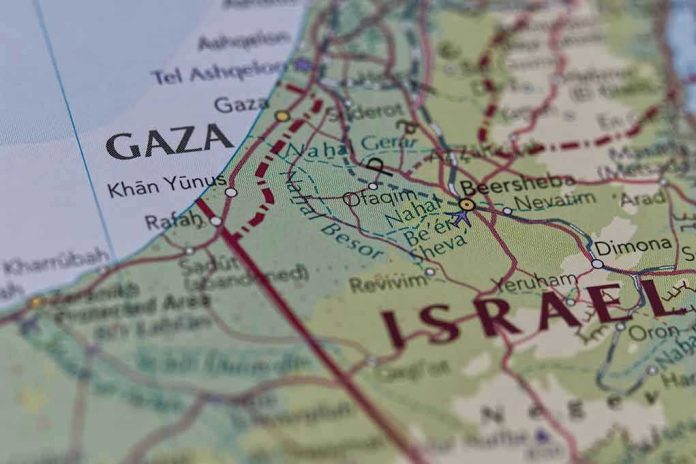
As bulldozers begin to clear the ruins of Gaza City, a monumental task of reconstruction and healing is set into motion, capturing the world’s attention to the dire humanitarian crisis unfolding there.
Story Highlights
- Ceasefire allows bulldozers to start clearing Gaza’s extensive rubble.
- Displaced residents return to devastated neighborhoods.
- Humanitarian agencies stress urgent need for aid and reconstruction.
- Rebuilding efforts face unprecedented challenges following two years of conflict.
Devastation and Displacement
Following the implementation of a ceasefire and the withdrawal of Israeli forces, bulldozers began the daunting task of clearing the rubble in Gaza City. This marked the beginning of a new phase in the aftermath of a prolonged conflict that left the city in ruins. The war, triggered by Hamas’s attack on southern Israel in October 2023, led to extensive destruction and massive displacement of residents.
The scenes unfolding as bulldozers move through what was once a bustling urban center are haunting. Neighborhoods have been flattened, vital infrastructure obliterated, and the social fabric torn apart. The residents returning to these devastated areas are met with overwhelming challenges, including homelessness, lack of basic services, and the trauma of displacement. The scale of destruction is unprecedented, leaving the humanitarian sector grappling with the enormity of the crisis.
Humanitarian Efforts and Urgent Needs
As bulldozers clear the debris, international humanitarian agencies like Amnesty International and the United Nations are raising the alarm about the urgent need for aid and reconstruction. The immediate focus is on providing shelter, food, medical care, and psychological support to the displaced population. However, the resources available are far from sufficient to meet the overwhelming demand.
Drone footage released shortly after the ceasefire revealed the catastrophic scale of devastation, further highlighting the urgent need for coordinated international support. Aid trucks have started entering Gaza, but the logistics of delivering sufficient supplies to meet the needs of the affected population remain a significant challenge. Humanitarian organizations are calling for sustained efforts to rebuild infrastructure and restore basic services.
Challenges of Reconstruction
The task of rebuilding Gaza City is monumental. Beyond the immediate humanitarian needs, long-term reconstruction involves restoring homes, rebuilding infrastructure, and mending the social fabric. The economic impact is severe, with local businesses, schools, and religious institutions destroyed or rendered non-functional. The path to recovery is fraught with challenges, and there are concerns about potential renewed conflict if underlying issues remain unresolved.
Moreover, the political landscape adds complexity to the reconstruction efforts. The Israeli and Palestinian governments, along with international actors, play crucial roles in shaping the future of Gaza. Ensuring accountability for the devastation and addressing the root causes of the conflict are essential to prevent future escalations and support sustainable recovery.
Expert Perspectives and Future Outlook
Experts stress the importance of international cooperation and accountability in addressing the humanitarian crisis in Gaza. Amnesty International has condemned the mass displacement and destruction as violations of international law, urging for immediate action to protect civilians and facilitate reconstruction.
Local leaders and international agencies emphasize the need for a comprehensive approach that includes rebuilding physical infrastructure, providing psychological support, and fostering social cohesion. As bulldozers continue to clear the rubble, the world watches closely, bearing witness to the resilience of Gaza’s people and the critical need for sustained international support in their journey towards recovery and peace.













